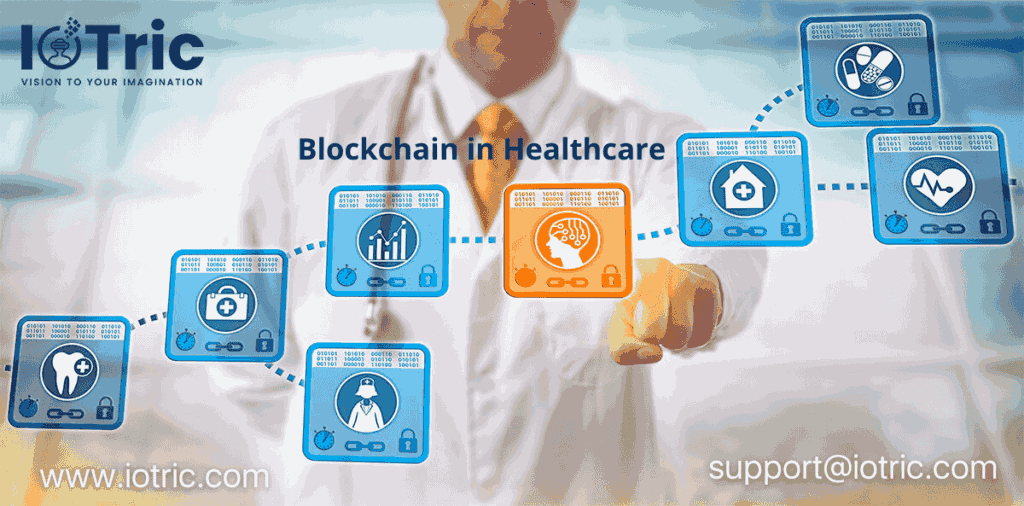Blockchain Technology
Blockchain In Healthcare

Why and How blockchain technology in healthcare?
Introduction
Security is always a concern when it comes to the transfer of patients’ medical records. With the growth of technology, cyber-attacks have also increased repeatedly at the same time. So, it is a great challenge for the healthcare industry to have strong security systems that can safeguard the medicine supply chain and channel of communication. Traditional and hardware security systems are not applicable enough to protect the huge amount of data and information that is exchanged on an everyday basis. In the demand for high-security systems, blockchain could be an inheritor in today’s era.
What is Blockchain?
Blockchain Technology is a powerful system for recording data and information in a manner that it creates tough or impossible settings to change, hack, and trick the system. It stores the data and information electronically in a digital setup. It is a technology that is invented for providing high protection for the huge amount of data that is communicated through untrusted channels. This technology assures fidelity and safety of records and creates a trustworthy environment. It is best known for its role in the cryptocurrency system for maintaining a secure and decentralized record of transactions.
Why Blockchain in the healthcare industry?
Blockchain Technology has a broad expanse of applications and usages in the healthcare sector. The chronicle technique in blockchain facilitates the secure transfer of patients’ medical records and organizes the medicine supply chain. It also simplifies health care investigators unlock genetic codes. This technology is useful to store data and medical records confidentiality, revamping patients’ information across various facilities and locations in real periods and with protection. It provides network infrastructure security at every notch. Blockchain enables the identity verification and authentication of every participant. This is a great technology to retain a uniform pattern of approval to access electronic health information. It is a promising innovation that can replace the traditional method of healthcare database management system.

Blockchain Technology in the healthcare:
- Tracking medical credentials
The health-focused blockchain plans to create credentials in the healthcare area are better, transparent and effortlessly accessible. Partners of the chain can ascertain the credentials and track record of several health specialists with professional credentials exchange.
- Improve medical record access
Patient data management is one of the prominent health care use cases for blockchain technology. There are systems that give priority to the patient agency by providing a transparent and accessible information view of medical history to the verified party. This system stores all the data and information of the patient in one place making it easier for patients and doctors to view.
- Improve doctors and patient interaction
Now you can have access and control over your private medical data and information with the use of the medical chain. Patients can connect immediately to their health records through mobile devices while keeping data secure on the blockchain. It also delivers telemedicine communication facilitating online video consultations with physicians.
- Improve medical record keeping
PhrOS is a system that aims to enhance transparency between hospitals by recording all of a patient’s medical data and information on blockchain technology. This comprises images and several information concerning the patient’s health conditions. Patients and physicians can access information by themselves through mobile applications. It increases the safety of medical data through DLT (Decentralized Ledger Technology).
Conclusion
The importance of blockchain in the health care sector is increasing rapidly. It can be applied to the healthcare industry in various ways that are leading to reduced costs and a modern way for patients to access the healthcare system. This allows medical information and data systems to work together within organizational limitations for the effective delivery of healthcare communication